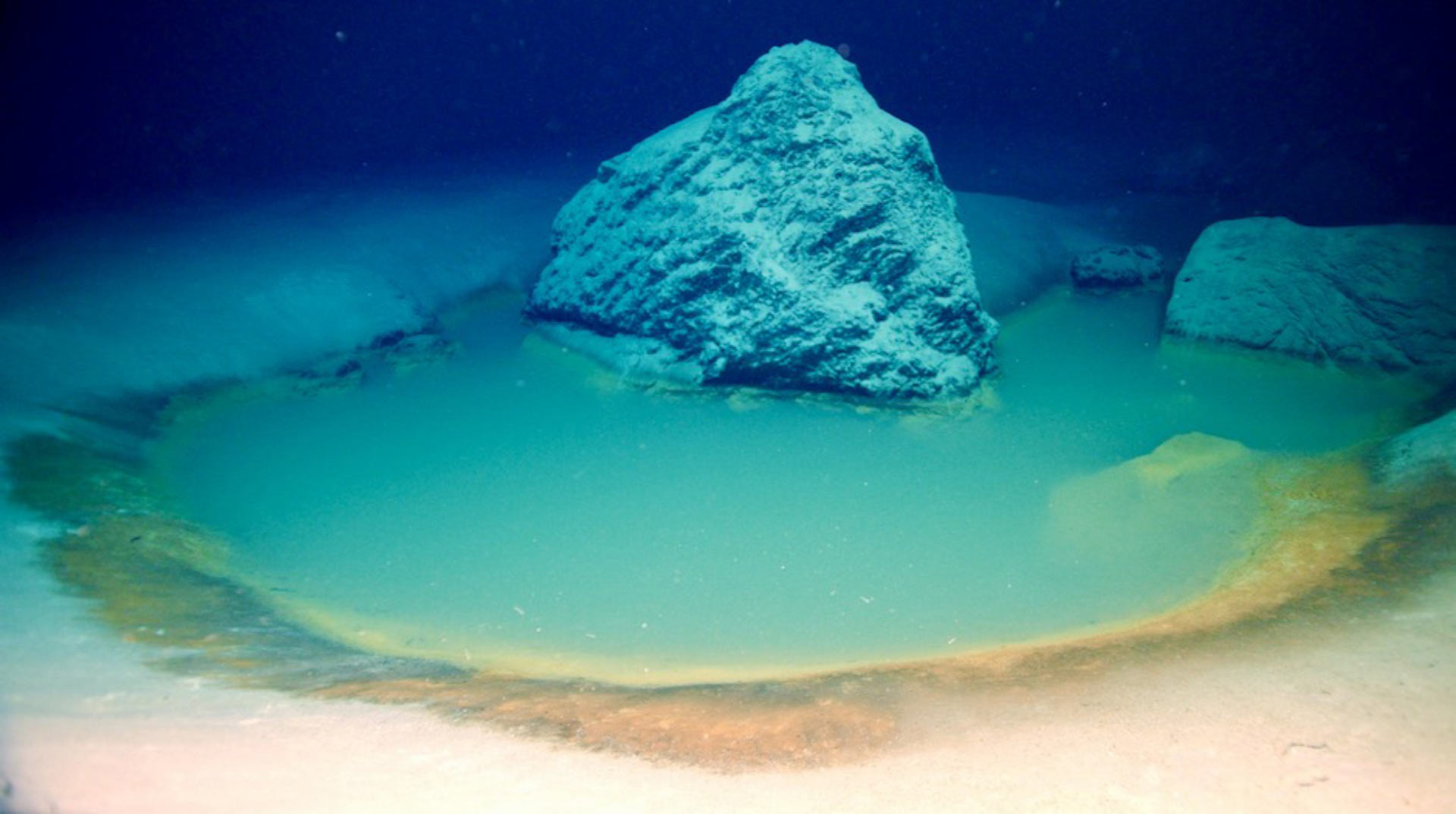
A team of researchers from the Rosenstiel School of Earth, Atmospheric and Marine Sciences in Miami have just discovered pools of brine under the surface of the Red Sea. While other similar features have been discovered in this part of the world, this is the first time they have been found further north, in the heart of the Gulf of Aqaba. According to scientists, they are full of life and contain unusual ecosystems.
Despite their rarity and diminutive size, saltwater lakes present intense oases of biodiversity in a deep-water environment that would otherwise lack numbers and variety of species.
“Until we understand the limits of life on Earth , it will be difficult to determine whether alien planets can host living things,” said Professor Sam Purkis, a researcher at the University of Miami Carbonate Research Center and co-author of the paper published Communications Earth & Environment magazine.
Brine lakes, not so rare
The Red Sea has the largest known number of deep-sea brine pools. These are thought to arise from the dissolution of pockets of minerals deposited during the Miocene epoch (about 23 million to 5.3 million years ago) when the sea level in the region was lower than it is today . There are many faults and fractures in the seabed associated with the tectonics of the region in this area of the Gulf of Aqaba. Until now, all known deep-water brine lakes in the Red Sea were located at least 25 km from the coast. But these are only 2 kilometers from the coast.
It was revealed that a significant number of living organisms inhabit these ecosystems. In fact, the professor’s team observed a multitude of microbiota, perfectly adapted to the high salinity of these brine pools; but also eels, sharks, fish and shrimp. An amazing variety of marine fauna has been able to adapt and take advantage of this harsh environment. Eels and shrimp, for example, feed on marine animals that die from the toxic salt content.
Consequently, all these findings allow researchers to learn more about the development of life in harsh and unfavorable environments.
A lucky break
“Our discovery of a rich community of microbes that survive in extreme environments may help trace the limits of life on Earth and may apply to the search for life elsewhere in our solar system and beyond,” the authors comment. They made their discovery at a depth of 1,770 meters using a remotely operated underwater vehicle (ROV) on the OceanXplorer, a highly equipped research vessel capable of exploring the most unreachable places on Earth.
“We were very lucky . The discovery came in the last five minutes of the ten hour ROV dive we were able to devote to this project,” said Professor Purkis.
“At this great depth, there is normally not much life on the seafloor,” Purkis said. “However , brine pools are a rich oasis of life. Thick mats of microbes harbor a diverse assemblage of animals.”
The largest underwater lake measured about 10,000 square meters in diameter, while three smaller lakes measured less than 10 square meters in diameter.
Referencia: Sam J. Purkis et al, Discovery of the deep-sea NEOM Brine Pools in the Gulf of Aqaba, Red Sea, Communications Earth & Environment (2022). DOI: 10.1038/s43247-022-00482-x